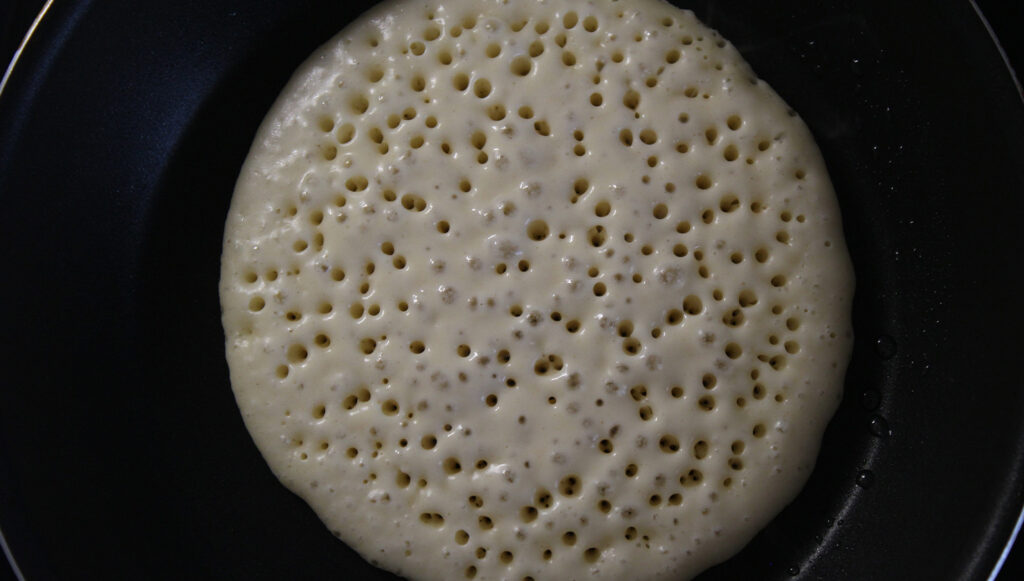
Hello! Today we will test your fears. Specifically, just one – fear of holes! Have you ever heard about trypophobia? Our simple picture trypophobia test will tell you if you have that phobia or not. Just a warning – if holes truly distress you, you might want to skip this one! Are you all set for this trypophobia test?
What is trypophobia?
Trypophobia is an irrational aversion or fear of small holes, bumps, and patterns of holes. In particular, it refers to a fear of spots and gaps that are close together. The name comes from the Greek language, where “trypta” means holes, and “phobos” means fear.
There is some debate about whether trypophobia is a real condition. Although it is not officially classified as a mental disorder, it can be identified as a phobia if the symptoms are severe enough.
The exact cause of trypophobia is unknown, but scientists have several theories. Some of them suggest environmental determinants. Trypophobia could originate from our biological mechanisms designed to protect us from danger.
Researchers discovered that images of some dangerous animals had the same spectral properties as images of trypophobic objects. Spectral properties can subtly affect the way your eyes and brain process visual imagery.
The conclusion is that trypophobia might be the result of a subconscious association of harmless items with dangerous animals.
Some specialists believe that trypophobia is related to another evolutionary response, the wish to avoid germs and contagious illnesses. This is because many persons who have trypophobia also have an intense aversion to scabs and other sorts of skin markings.
Symptoms of trypophobia
People with trypophobia will feel fear, disgust, and distress when looking at clusters of holes or bumps. Other symptoms are typical symptoms of any phobia. They include:
- excessive sweating or shaking
- itching or goosebumps
- fast heartbeat
- gagging and nausea
- feeling dizzy
- visual discomfort
- discomfort and stress
- panic attacks
To be classified as a phobia, symptoms must be long-lasting, intense, and have a negative impact on a person’s quality of life.
What triggers trypophobia?
Things like lotus seed pods, Swiss cheese, strawberries, and other food that has holes in them can trigger trypophobia. Animals with spots on their skin or fur can also cause that reaction. Some everyday objects that might trigger trypophobia include sponges, bubble wrap, aluminum metal foam, and others.
Trypophobia does not affect everyone in the same way. Some people are only bothered by irregular-sized holes, but holes or bumps of the same size don’t cause discomfort.
How common is trypophobia?
The general estimate is that about 15% of people could experience trypophobia to a certain level. Research on this condition is still rather sparse, so we don’t know the exact number.
Usually, more women have it than men. One study revealed that around 25% of respondents with trypophobia had a family member who also had trypophobia. It suggests that the condition could run in families. We know that relatives with any kind of phobia increase your risk of having trypophobia.
Analyze certain factors to see if you have depression.
Another study found a connection between trypophobia and major depressive disorder, generalized anxiety disorder, and panic disorder. For example, 19% of participants were diagnosed with major depression.
Do you want to chek if you have social anxiety?
Is there a treatment for trypophobia?
There is no specific treatment, but many of the remedies used for other phobias and mood disorders are likely to help reduce symptoms.
Is there a trypophobia test? Because trypophobia is not a recognized disorder, it cannot be diagnosed. A medical professional, on the other hand, will notice signs of distress and may offer support and advice.
Exposure therapy can help people overcome their fears by exposing them to their triggers. Individuals with trypophobia can confront their anxiety in a safe environment and change their reaction to triggering objects with a specialist’s support.
Cognitive behavioral therapy involves a patient working with a therapist to identify and change the unwanted thoughts and emotions that could contribute to trypophobia.
Relaxation techniques like breathing exercises, practicing mindfulness, or visualizing peaceful images can also help. Visualization includes picturing images, situations, or places that make a person feel calm and relaxed, for example, a meadow full of flowers. Another relaxation technique is a distraction. When your trypophobia gets triggered, try looking away from objects causing distress and think about something else till the symptoms ease.
Mental health specialists might recommend medication in specific cases. Anti-anxiety drugs, antidepressants, beta-blockers, or benzodiazepines could be prescribed.
Our trypophobia test will expose you to a series of images that could potentially trigger trypophobia. You will have to answer if these images upset you or not. Be aware that this trypophobia test might cause you distress. It won’t replace professional opinion, so if your condition negatively affects your life, talk to a doctor!
Are you ready for the trypophobia test? Take a look at these images and test yourself. Our simple quiz will give you the answer you’re looking for!
Is trypophobia a real disorder?
Trypophobia is a genuine condition, but it’s not recognized as a mental disorder.
What results can you get?
A score over 14 points suggests you might have trypophobia.
Is trypophobia common?
We can estimate that around 15% of adults could have trypophobia.
Can trypophobia be cured?
Medication, therapy, and relaxation techniques can all aid in symptom relief.

